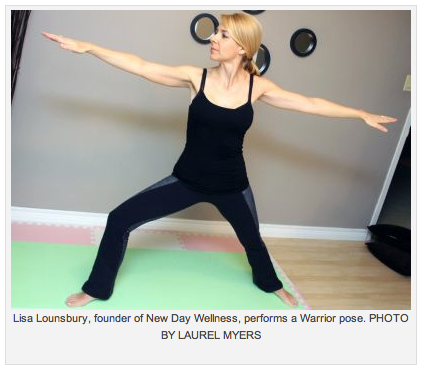 Are you avoiding yoga because you don’t want to miss out on a cardio workout?
Are you avoiding yoga because you don’t want to miss out on a cardio workout?
What is the definition of cardio? The American College of Sports Medicine (ACSM) defines aerobic (cardio) exercise as “any activity that uses large muscle groups, can be maintained continuously, and is rhythmic in nature. It is also defined as exercise that increases the need for oxygen and elevates the heart rate to a specific level, typically at least 60 to 70 per cent of one’s max heart rate.
Yoga is a full-body exercise that improves flexibility and balance and strengthens and tones muscles. When you incorporate the yoga postures that use large muscle groups at a constant pace with few breaks, you will begin to notice your heart rate increase significantly. Ashtanga and power yoga are the two styles that offer the most cardiovascular benefit.
Although yoga has become much more popular in recent years, there still seems to be some stigma on the cardiovascular benefits of practicing yoga. Many people, especially men, shy away from trying a yoga class because they think it’s just a stretch and meditation class. Little do they realize how hard participants can work their muscles and how quickly they can increase their heart rate.
By engaging your muscles in an isometric contraction (the joint angle and muscle length do not change during contraction) during a yoga pose, you will use a great deal of strength and energy.
When performing a yoga pose (especially standing poses such as Warrior I, II, III) you can engage and contract your muscles to increase the intensity. An example would be in a Warrior II pose (pictured), with an isometric contraction of your stomach, back, shoulders, arms and legs, you are essentially engaging your entire body. As you continue to move through your poses and engage your large muscle groups, you will quickly start to feel your heart rate increase. By using a slow burn and dynamic resistance (like you are pushing through clay), your heart has to beat faster to get blood to the muscles.
At the age of 46, I’ve decided to stop working out. “What? A personal trainer and wellness coach who doesn’t work out?!” Well, that’s what I’ve decided to do and I feel stronger and healthier than ever before.
A year and a half ago, I was teaching a boot camp class to a group of women in their 20s. Since I was their leader, I felt I had to show I was just as strong and energetic as they were. As I yelled out commands and encouraged them to push harder, I was doing the same thing myself. After a few weeks of teaching boot camp, I noticed I was chronically sore and tired. It was like my body was starting to shut down and everything started to hurt. Sure, I was developing more muscle and burning a ton of calories, but at what cost?
I’ve been practicing yoga for 15 years and never really appreciated the value it brought to my overall health and wellness. That’s when I decided I didn’t need to work out, but rather focus on my yoga practice in a way that would continuously challenge my mind, body and spirit to be stronger.
So stop wondering if you will get a cardio workout with yoga — join a class and start feeling flexible, strong, energetic and happy.
http://www.sudburysportsmag.ca/2014/05/05/yoga-a-cardio-workout.html
